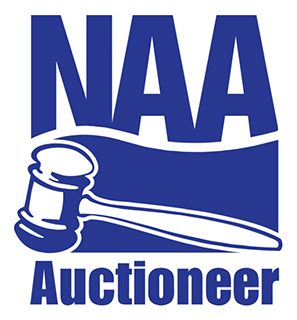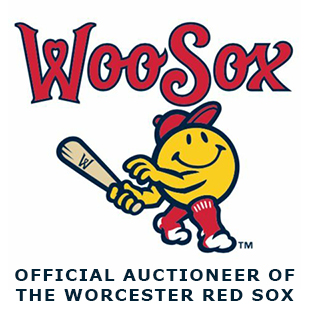Merriam Webster defines folk art as “the traditional typically anonymous art of usually untrained people.” These self-taught artists used a wide variety of mediums when they produced their works.
If you live in New England – or inherited an estate here – the chances are good you’ve got some valuable folk art. It may be a painting, carving, sign, weathervane, or gameboard (more info on each below).
To get the maximum return for your folk-art piece or collection at auction, please call Central Mass Auctions at 508-612-6111, or email us, or read on to find out more.
Popular forms of folk art
Painting, of course, was one of the most important ways that they expressed themselves. Folk art paintings are sometimes described as naïve or naïf art. Folk Art artists painted many of the early American portraits from the late 18th century and early 19th century. Villages, ships, animals and still-life painting are just a few of the many other types of paintings created by Folk Art painters. Folk Art paintings have been compared unfairly to cave drawings or children’s art with paintings typically being flatter and lacking perspective and dimension.
Along with paint, many Folk Art artists also worked with wood. Wooden signs were used to advertise businesses. Carved figures were used to promote businesses or for decoration. A rare “Cigar Store Indian” brought over $200,000 at auction in 2010. Ships, duck decoys, other animals, game boards and people are just some of the forms created by Folk Art artists.
Metal was also widely used by Folk Art artists. Weathervanes are one type of metal work that are highly collectible. We sold a 19th century banner weathervane for over $5,200 at auction. In 2006 a weathervane from the Woonsocket, RI railroad station in the shape of a train was auctioned and brought $1.2 million. Antiques and the Arts weekly reported that a molded copper weathervane of a Native American with a bow and arrow sold for $5.84 million in 2006.
Folk art pieces we’ve sold: a few examples
Most of the Folk Art pieces we’ve sold have been from the 19th century, because older pieces tend to bring the strongest returns at auction.

We sold a pair of leather fire buckets (from a Woodstock, CT estate) that fetched $19,550 in an unreserved auction.

We sold a leather fire bucket from Boston that brought a four-figure sum.
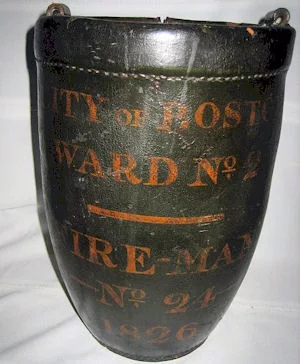
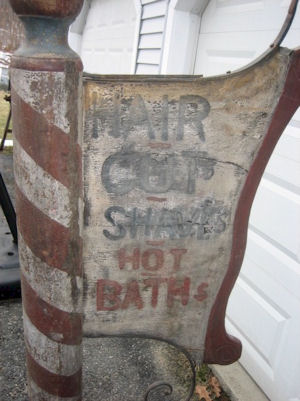
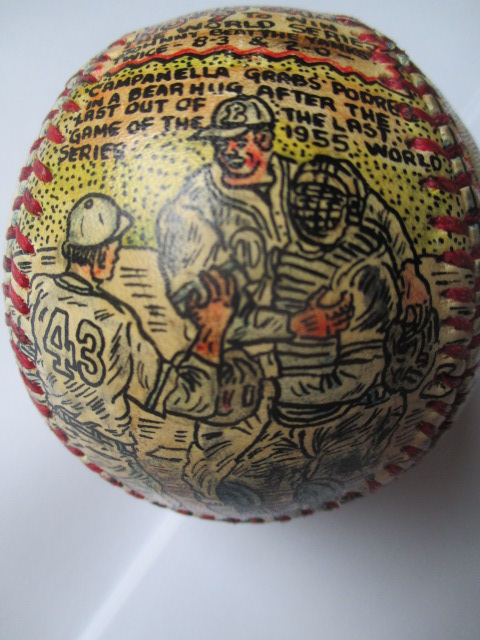
George Sosnak was an umpire who aspired to work in the major leagues. He had artistic talent and was once asked by a fan to draw a picture on a baseball. The fan loved it and he found that many others also enjoyed his work. He is believed to have created around 3,000 baseballs, with only 800 having been painted on every panel of the ball. We have one that he created for the 1955 World Series.
Antique Weathervanes
Weathervanes are some of the most popular folk art items we sell.
Some weathervanes can sell for thousands of dollars. We look for well-sculpted weathervanes with a metallic patina and fine artwork. The most popular weathervanes are generally from the late 19th or early 20th century.
Weathervanes from companies like J Harris & Co., JW Fiske, Jewell & Co., Cushing & White/LW Cushing & Sons, J Howard, or the Dempster Mill Manufacturing Company all tend to be in-demand as collectors’ items.
Carvings
Folk art carvings can include anything from sculptures to boxes to signs. We often look for wooden carvings from the late 19th century and early 20th century.
The value of carvings can vary dramatically, ranging from a couple of dollars to hundreds or even thousands of dollars. Some carvings have sold for six figures at auction. In general, you’ll want to look utilitarian or decorative art that predates the mass production of similar items; those bespoke carvings tend to sell for the most at auction.
Paintings
Self-taught American painters created some wonderful works of art that remain prized by folk art collectors. Typically collectors look for one of five genres, including portraits, landscapes, historical paintings, religious paintings, and still-life. Of those, landscapes tend to have the least value for collectors at auction.
Especially valuable are the paintings of certain artists, including John Brewster Jr., Jacob Maentel, Sheldon Peck, John Bradley, William Matthew Prior, Maryan Smith, Rufus Hathaway, Joshua Johnson, and others.
Gameboards
Gameboards may be mass-produced today, but in the 19th century farmers would often paint their own game boards. They’d create their own pieces out of wood scraps, corn kernels, or even beans.
You can also find lithographic prints of board games from the 1850s to the 1900s.
You may even find some board games you’ve never heard of, because they never were produced widely, like “The Mansion of Happiness,” or the “Game of the District Messenger.” If the board, pieces, and instructions are in good condition the set could be worth a good amount at auction. Also, you can keep a forgotten but enjoyable game alive for generations to come, by introducing it to others who’d never have known about it otherwise.
Signs: 2D and 3D folk art business signs
Because signs were not mass-produced during the folk art era they tended to be unique, hand-painted by the proprietor of a given business. They served the same purpose they do today: helping to promote the business. Many were both carved and painted, morphed into 3D works of art, and were made large to attract attention.
Because of their artistic, visual, and historical qualities, and because one never can “collect them all,” folk art business signs tend to attract extra-enthusiastic collectors. Folk art signs in excellent condition continue to bring in healthy prices at auction.


